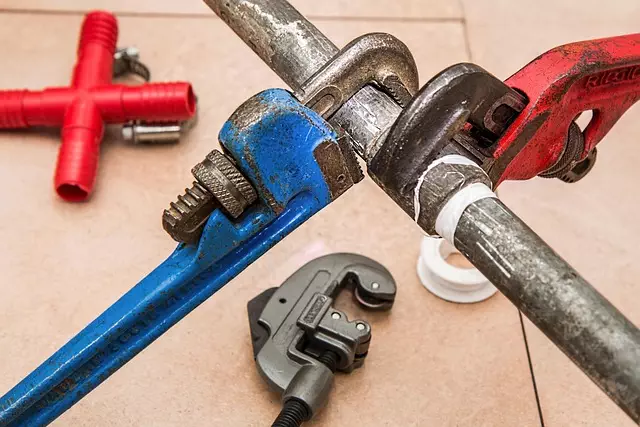Residential foundation repair is critical for home structural integrity and safety. It involves assessing walls, floors, ceilings, doors, and windows for damage. Common issues like cracks, unevenness, and bowing walls are caused by soil composition, construction quality, and environmental changes. Regular inspections catch these early, preventing severe structural damage. Advanced technologies like drone surveillance and GPR enhance assessment accuracy. After assessment, interpret results to plan tailored repairs, prioritizing severity. Proactive maintenance, including regular checks, proper drainage, grading, and sealing cracks, minimizes foundation repair needs.
“Discover the intricacies of comprehensive residential foundation assessment, a crucial step in ensuring your home’s structural integrity. This guide delves into the process of identifying common issues within home foundations, from initial inspections to advanced technologies used for thorough evaluation. Learn how to interpret assessment results and plan repairs effectively. Additionally, explore preventative measures to safeguard your home’s foundation against long-term damage, ultimately promoting optimal structural health.”
Understanding Residential Foundation Repair: The Initial Step

When it comes to ensuring the structural integrity and longevity of your home, understanding residential foundation repair is paramount. The foundation serves as the bedrock upon which your entire house stands, making any issues not only costly but also potentially dangerous if left unaddressed. A comprehensive assessment is the initial step in this process.
During a full-home foundation assessment, experts inspect every corner of your property to identify signs of damage or instability. This includes examining the walls, floors, and ceilings for cracks; checking the alignment of doors and windows; and assessing the overall leveling and stability of the structure. By taking these critical first steps, homeowners gain invaluable insights into their home’s foundation health, enabling them to make informed decisions regarding any necessary repairs.
Identifying Common Issues in Home Foundations

Identifying common issues in home foundations is a crucial step in ensuring the longevity and stability of your residence. Many factors, from soil composition to construction quality, can contribute to problems like cracks, unevenness, or bowing walls. One of the most prevalent residential foundation repair needs is addressing settlement issues, often caused by changes in soil moisture levels or uneven compaction during construction. Other frequent concerns include heave (an upward push due to expanding soil) and tilt, which can result from poor drainage, tree roots, or nearby construction activities.
Regular inspections are key to catching these issues early on. Signs of trouble may be subtle at first—small cracks in concrete, floors that feel uneven, or doors that stick—but they can signal more severe structural damage if left unaddressed. By proactively identifying and addressing foundation problems through professional evaluation and tailored solutions like piering, underpinning, or wall anchors, homeowners can avoid costly repairs down the line and maintain the safety and value of their homes.
The Process of Conducting a Full-Home Foundation Assessment

Conducting a full-home foundation assessment involves a meticulous process designed to pinpoint potential issues within a structure’s foundation, a critical component in residential construction. This comprehensive evaluation begins with a visual inspection, where experts examine the exterior and interior of the house for signs of damage or unevenness. They look for cracks in walls, floors, or ceilings, as these could indicate underlying problems with the foundation. During this phase, specialists also inspect the property’s drainage, checking for proper slope away from the home to prevent water accumulation near the foundation.
The assessment deepens with non-invasive testing methods like moisture meters and pressure tests. These tools help detect potential issues such as excessive humidity or hidden leaks that could compromise the foundation’s integrity. For older homes or those showing signs of shifting, more advanced techniques like ground-penetrating radar (GPR) are employed to create detailed images of the foundation, identifying any structural anomalies. The entire process culminates in a detailed report outlining observed issues and recommendations for residential foundation repair, ensuring the home’s structural stability and longevity.
Advanced Technologies for Comprehensive Inspection

In today’s digital era, advanced technologies have revolutionized the field of residential foundation repair, enabling more comprehensive and accurate inspections. One such innovation is drone surveillance, which offers a bird’s-eye view of the entire home, allowing experts to identify potential issues from overhead that might be overlooked during traditional on-foot assessments. This technology is particularly useful for examining remote or hard-to-reach areas, providing valuable data for creating detailed reports.
Additionally, ground-penetrating radar (GPR) has become an indispensable tool in full-home foundation assessments. GPR can penetrate the earth’s surface, revealing the structure beneath without causing any damage to the property. This non-invasive method provides clear images of underground elements, such as steel reinforcing bars, pipes, and existing foundation conditions, ensuring that any necessary repairs are targeted precisely and effectively.
Interpreting Assessment Results and Planning Repairs

After a thorough full-home foundation assessment, it’s time to interpret the results and plan any necessary repairs for your residential foundation repair needs. Look for signs of shifting, cracks in walls or floors, uneven floors, and doors or windows that stick or swing loose. These can all indicate potential foundation issues.
The assessment report will outline problem areas and suggest solutions tailored to your property. Prioritize repairs based on the severity of the issue and consult with a professional foundation repair contractor to discuss the best course of action. Effective planning and timely intervention are crucial in mitigating further damage and ensuring the structural integrity of your home.
Preventative Measures for Long-Term Foundation Health

Maintaining a home’s foundation is an ongoing process, and implementing preventative measures early on can save significant costs and future headaches in the long run. Regular inspections are key; identifying potential issues like cracks, uneven floors, or signs of water damage allows for timely intervention. One effective strategy is to establish a regular maintenance schedule that includes checking for moisture intrusion, as it can lead to serious foundation problems over time.
Additionally, ensuring proper drainage around the house is vital. Redirecting water away from the foundation through proper grading and installing downspout extensions can prevent erosion and reduce hydrostatic pressure, both of which are major contributors to foundation damage. Regularly sealing cracks and applying a waterproof barrier can also protect against moisture intrusion, keeping your residential foundation repair needs minimal.
